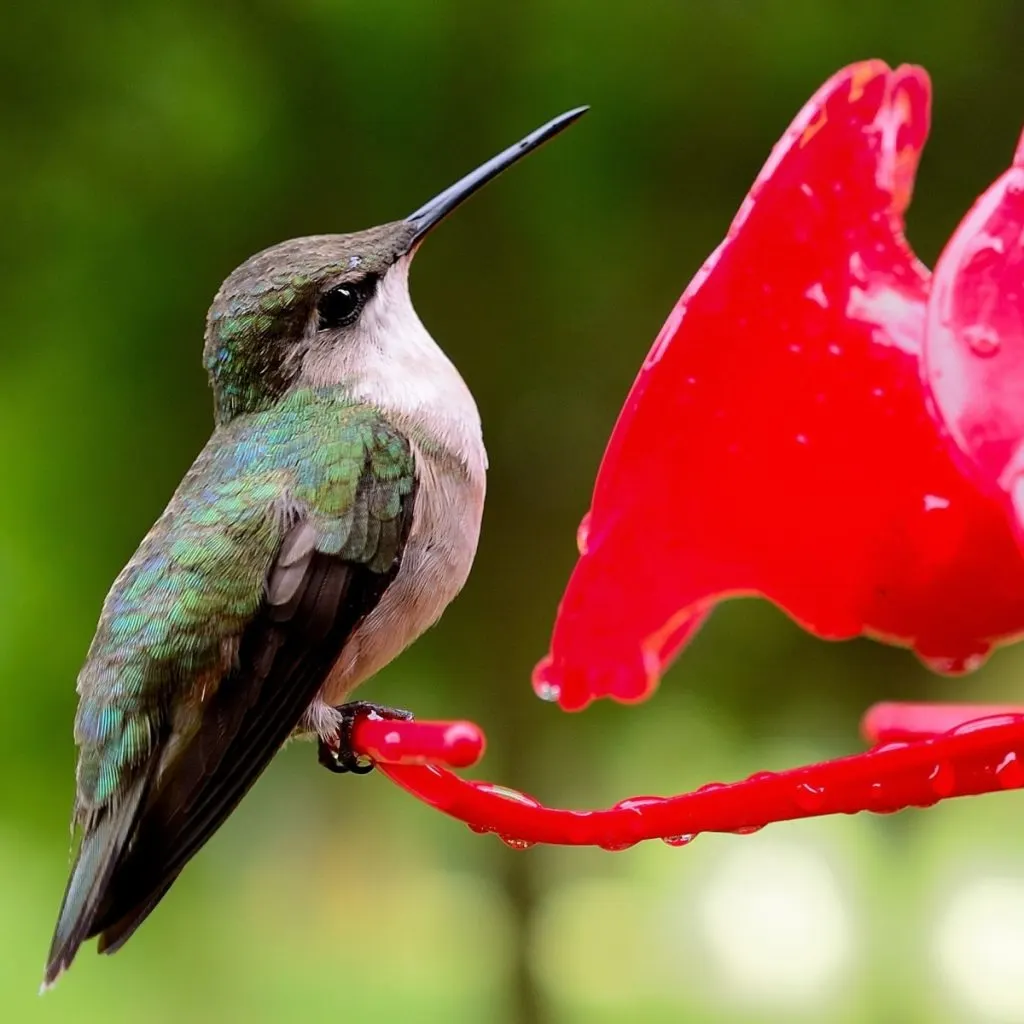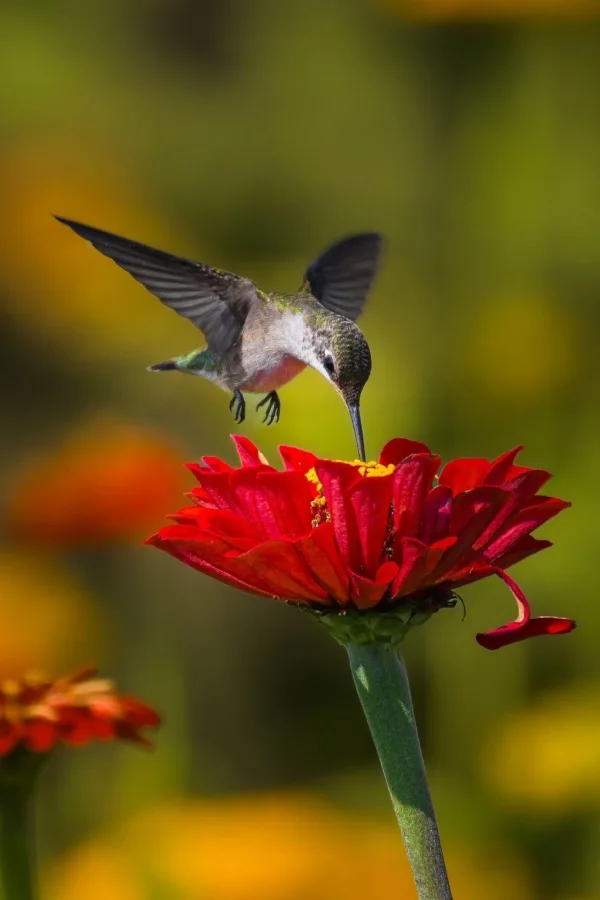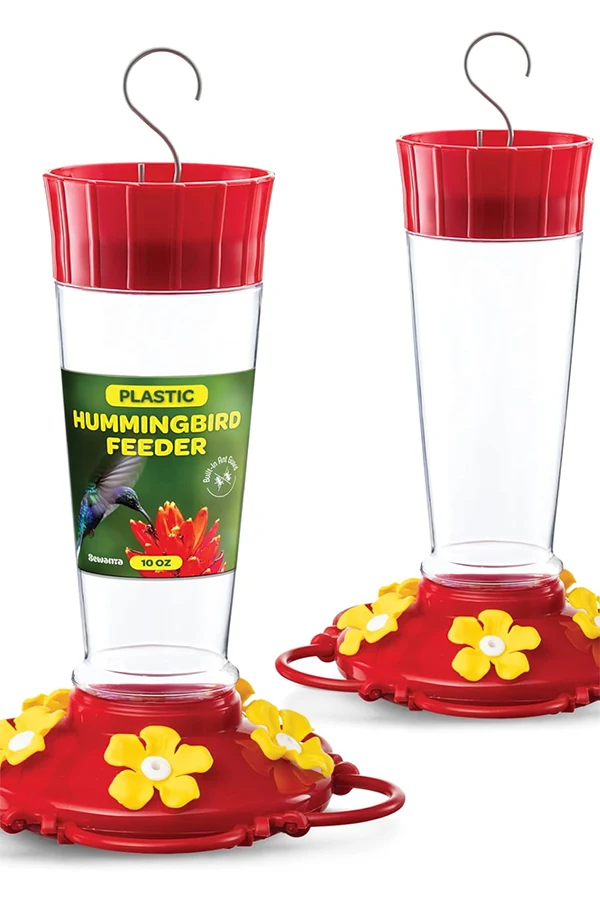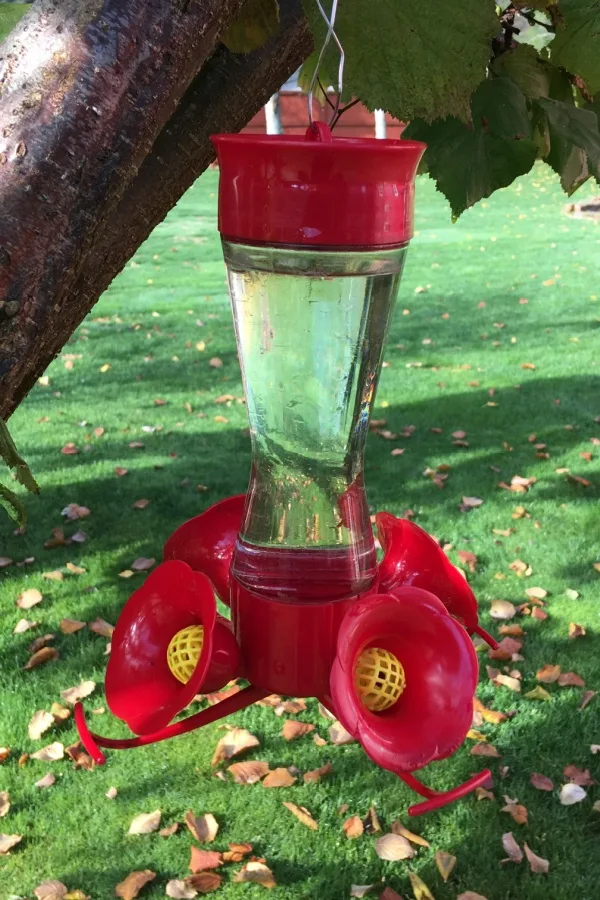Did you know that one of the most important times of all to feed hummingbirds is in late summer and early fall? And that it truly can mean the difference between life and death for these hard working pollinating birds?
One of the most beautiful sights of spring and summer is the sight of hummingbirds hovering around a feeder full of fresh nectar. But once late summer arrives, all too often, hummingbird feeders are left empty as many realize these tiny birds are ready to migrate south to warmer weather.
Many gardeners worry that feeding them too late in the season will keep them from leaving on time. Others assume they don’t need to be fed once late summer arrives. But both couldn’t be further from the truth!

One thing is for sure, keeping a hummingbird feeder filled late in the season won’t actually cause the migrating birds to stay put. But it will help provide them with a tasty meal and extra energy to get to those warmer spaces safely!
Hummingbirds have a natural instinct to travel to warmer locations where there is plenty of food. Those who are on their way South actually benefit greatly from having feeders left out in the fall so they can have the best chance possible of surviving their travels.
In fact, feeders are extremely important once fall hits since there is a lack of flowers and other food sources available.
Why And How To Feed Hummingbirds In Late Summer & Fall
A Gardener’s Best Friend
During the spring and summer months, hummingbirds are frequent visitors to home gardens and flowerbeds. They often find food sources that are near trees to offer natural protection for their nests.
As the hummingbirds travel from flower to flower, they help to pollinate all the blooms in your garden. But it’s not just the flowers that the hummingbirds are helping out with.
These high-energy flyers also help control unwanted insect populations as well. Garden pests like mosquitoes, aphids, leafhoppers, gnats, beetles, and caterpillars are often on a hummingbird’s lunch menu.

Because of this, many people like to put out feeders in early spring and throughout the summer months to help encourage hummingbirds to make their property their home. In return, the feeders help to provide the birds with additional sources of nutrients when insects and nectar might be in short supply.
Migrating South – How & Why To Feed Hummingbirds In The Late Summer & Fall
Once the weather starts to cool down and daylight hours are reduced in the fall, hummingbirds start to make their journey south. Whether they are encouraged by the reduced amount of flowers and insects or by natural instinct, a long road ahead awaits them.
What begins as a journey from as far north as Canada ends up down around Mexico or Central America. In fact, some species of hummingbirds travel over 2000 miles or more in order to reach their sunny destinations. And finding food along the way is critical for their survival on the journey!
Some hummingbirds will stop and stay for just a few minutes before moving along. Others can stick around for a few days in order to refuel their bodies with nourishment. But if there are not feeders out – it can be tough for them to refuel.
Unfortunately, fall is a time when most annual and perennial flowers put a halt on blooming. This means there aren’t a lot of food sources and nectar available for the hummingbirds. In addition, insects and many are also harder to find as well.

But that is where feeders can save the day! Keeping hummingbird feeders out during late summer and early fall months can be critical in helping the migrating birds have a successful journey south. But what you feed them is important!
Fueling Hummingbirds For Flight – How & Why To Feed Hummingbirds In The Late Summer & Fall
Hummingbirds require a tremendous amount of nutrients and calories in order to fuel their tiny bodies. In general, they consume around 50% of their body weight each day.
This high amount of calories is to needed to help provide enough energy for their overworking bodies. For example, their tiny hearts race at approximately 1200 beats per minute while they are in flight. In addition, they flap their wings on average around 60-70 times each second. And that’s on a normal day!
But in order to help prepare for their migration south, hummingbirds need even more energy to get them through their trip. Most attempt to double their body weight before they take flight. This is a task that can prove difficult with a lack of bugs and flowers around.
Hummingbird Feeders & Food – Why & How To Feed Hummingbirds In Late Summer & Fall
When choosing a hummingbird feeder, you want to keep a few things in mind. The most common feeder choices are either glass or plastic. Avoid metal if you live in warmer locations since it can conduct heat more easily than the other options. Affiliate Product Link: Plastic Hummingbird Feeder With Built-In Ant Guard

Fill the hummingbird feeder with a sugar-to-water ratio of 1 to 4. For example, for every one cup of sugar, add four cups of water. Allow the sugar to dissolve fully before adding it to the feeder. Boiling the water is no longer required but if you do, allow it to come to room temperature before adding it to the feeder.
Hummingbirds are attracted to the color red since those types of flowers typically contain the most amount of nectar. However, DO NOT add red food coloring to your mixture. The birds simply don’t need it. The red and yellow feeders are more than enough to attract them.
Most hummingbirds feed early in the morning to give them enough energy to get them through the day. Ensure that the feeders are full during this time to give the birds the best chance at feeding.
Feeding Straggler Hummingbirds Past Fall Migration Time
Keep your hummingbird feeder out at least a couple of weeks after you see the last bird. You never know when travelers from farther north may still be heading down the route – and they, more than any other bird, can use refueling.

If the nighttime temperatures drop too low, bring the feeders in at night and set them out again early in the morning. You should also attempt to warm up the liquid since very cold nectar can actually stun the birds, leaving them unable to fly for awhile.
One thing is for sure, by helping to feed hummingbirds this fall, you are giving them the best chance possible at surviving and making a successful trip south! For more on feeding birds, check out our article: The Best Bird Feeders To Use In Winter – How To Feed Birds Better When It’s Cold
Simple Garden Life
Follow Our Facebook Page For Even More Great Tips! Simple Garden Life Facebook Page
Simple Garden Life is a website dedicated to keeping gardening fun, simple and enjoyable! We publish two new articles each week along with a new garden podcast episode every two weeks. This article may contain affiliate links.
